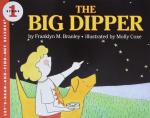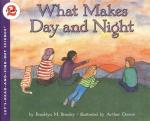Astronomy
Find the Constellations
I've always loved looking at the stars, but have never been able to identify anything but the big dipper on a starry night. For many years, I've wanted to learn more, but with the busyness of life, this goal has long eluded me. Enter ... Find the Constellations by H.A. Rey. Over the past few weeks, my two oldest children and I have started identifying the constellations with the help of this book and The Stars: A New Way to See Them (by the same author).
Eyewitness: Astronomy
Although most books in the DK Eyewitness series are at least slightly problematic in the text, our family enjoys a number of them entirely for the sake of the pictures. Eyewitness: Astronomy is one of the ones I wouldn't bother with even for the pictures. Although there are many beautiful photos, the book overall is both disappointing and even problematic in places.
The Big Dipper
A very simple science book for children with cartoon-like pictures (nice cartoon, not cheezy-cartoon) that introduces some basic concepts about the stars. The very simple story line discusses looking at the night sky, that you see different stars in the summer and winter, where the big dipper got it's name, the names of the stars that make up the big dipper, how people can find direction from the North Star and the traditional constellation Ursa Major that the Big Dipper belongs to.
The Universe: Think Big!
Jeanne Bendick, author of Archimedes and the Door of Science, explains some basic concepts regarding the universe in a surprisingly simple way (approximately 2nd grade reading level - short pages with large type). First she invites children to try to imagine how big the universe is (in terms of it being much, much bigger than other, more familiar things). The bulk of the book focuses on large distances and how they're measured and how people used to believe that the earth was at the center of the universe and remained motionless. The final page explains the big bang theory.
Space Encyclopedia
We've started working our way through parts of this book as a read-aloud for younger children but have enjoyed it especially for the pictures. It covers everything from the Hubble Space Telescope to the surface and atmosphere of the Sun, Moon and Planets, from Space Pioneers to star maps, from explanations of various types of telescopes to black holes and discussions of the possibility of extraterrestrial life. We've only read a small portion of the text so far, but were pleased to find that the text came out better than expected in several litmus-test areas.
What the Moon is Like
This book covers the appearance of the moon from the earth (in regards to its surface rather than its changes over the month), the explanations people have given for the appearance of the moon (man in the moon, etc.) and why it really looks that way. It covers many interesting details about the surface of the moon (including a simple map of the moon's surface marked with the locations of moon landings), its atmosphere, the length of day and night on the moon (and the extreme temperature difference between the two), the difference in gravity on the moon, etc.
Astronomy for Every Kid
Offering "Exciting ideas, project, and activities for schools, science fairs, and just plain fun," this book is one in a series that is very popular with homeschoolers (and understandably so). The book covers seven major topics - Planets, Space Movement, The Sun, The Moon, The Stars, Space Instruments and Space/Space Travel. Each experiment uses simple experiments and explains (briefly) the purpose, the procedure, the expected result and a brief but very understandable explanation of why it happened. Black and white sketches illustrate each experiment as well.
The Moon Seems to Change
This book, through simple illustrations and very readable text, gives young children (approximately Kindergarten thru third grade) an excellent explanation of the moon and the changes we can easily observe in it during a month. What often seem like complex concepts - the phases of the moon and its movement relative to the earth - are made very understandable through the text and a very simple experiment involving an orange stuck onto a pencil (a styrofoam ball stuck onto a chopstick worked quite well for us with less mess) and a flashlight.
What Makes Day and Night?
The clearly written text is combined with simple, colorful pictures to make the concepts of day and night and the rotation of the earth in relation to the sun very understandable for both young children and their parents. : ) Included is a very simple hands-on "experiment" requiring only your child and a desk lamp. Some information about the moon is also covered. Like other books in this series, this book is a great solution for satisfying some of those "why" questions that young children constantly ask.









